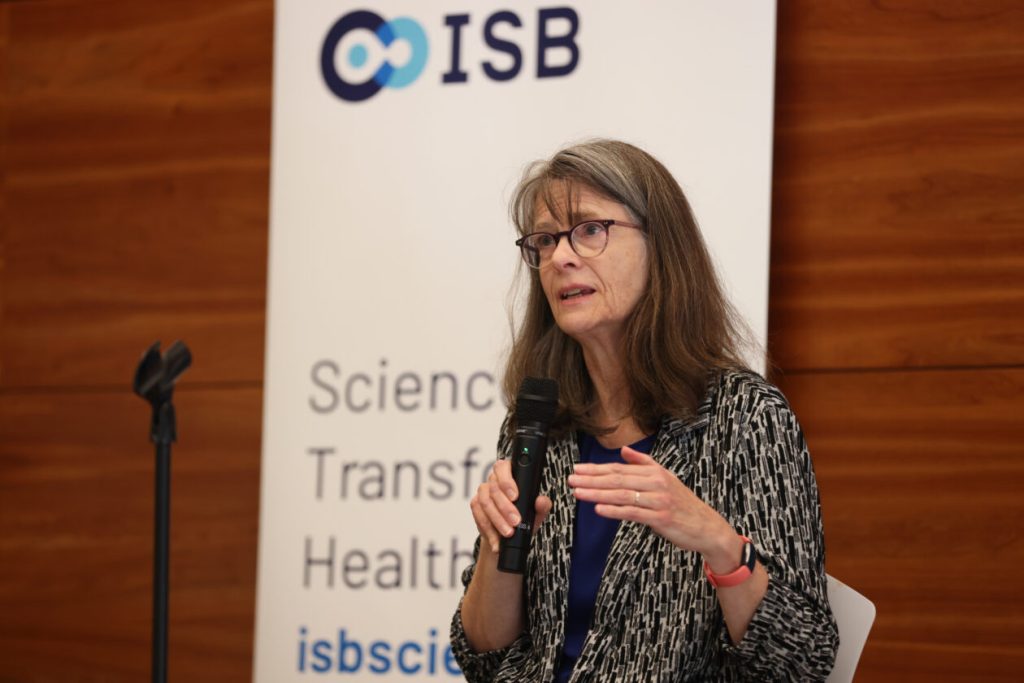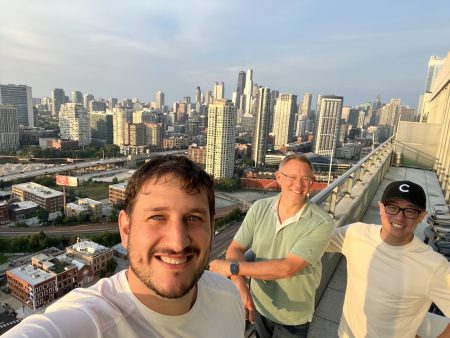FROM BIOTECH STARTUP TO NOBEL PRIZE: SEATTLE SCIENTISTS’ GROUNDBREAKING IMMUNOLOGY JOURNEY
In a remarkable scientific journey that began at a small Seattle-area biotech startup, Mary Brunkow and Fred Ramsdell’s pioneering work has culminated in the highest recognition in science – the 2025 Nobel Prize in Physiology or Medicine. The pair, who alongside Japan’s Shimon Sakaguchi, were honored for their groundbreaking discoveries of regulatory T cells, often described as the “immune system’s security guards.” Their research, which began at Darwin Molecular in the early 1990s, has fundamentally transformed our understanding of how the immune system regulates itself and has opened new pathways for treating autoimmune disorders that affect millions worldwide. As Brunkow was celebrated at Seattle’s Institute for Systems Biology (ISB), where she currently serves as a senior program manager, the story of how a small startup backed by tech giants Bill Gates and Paul Allen helped launch research that would eventually change medical science came into focus.
The story begins in 1992 with the founding of Darwin Molecular in Bothell, Washington, a biotech startup that attracted investment from Microsoft co-founders Bill Gates and Paul Allen. The company’s ambitious mission was to clone individual genes at a time when the Human Genome Project was just beginning its work to sequence human DNA. Brunkow and Ramsdell joined the company two years later, bringing fresh energy to a team that already included renowned biologist Lee Hood. At Tuesday’s celebration event at ISB, Hood recalled the immense challenges and skepticism they faced: “When the company started, there was no complete genome to work from. You had to do it from scratch, and it was an extremely challenging idea. And there was enormous skepticism.” Despite these obstacles, the team at Darwin Molecular persevered, driven by scientific curiosity and the freedom to explore new research avenues. For Brunkow, joining the biotech industry rather than pursuing an academic career was an exciting choice. “We made a great team at this small startup company where we were given the freedom to try different things,” she reflected. “And it was a really exciting time.”
The research that would eventually lead to Nobel recognition began with Brunkow tackling a deadly autoimmune disease in mice. She initiated a genetics program to breed mice and isolate the specific mutation causing their condition. Through painstaking work, Brunkow and her colleagues sifted through DNA sequences until they identified a critical gene, which they named FOXP3, and pinpointed the genetic error causing its malfunction. Meanwhile, Ramsdell’s team focused on understanding the cell biology and immune system operations in these mutant mice. After isolating the gene, Brunkow’s team explored its cellular function, gradually uncovering new insights into how the immune system regulates and suppresses its own responses. This collaborative approach, combining genetic analysis with cellular immunology, proved incredibly fruitful. The researchers demonstrated that the FOXP3 gene was crucial to the development and function of regulatory T cells, which help prevent the body’s immune system from attacking its own tissues – a malfunction that leads to autoimmune diseases like rheumatoid arthritis, multiple sclerosis, and lupus.
The significance of their discovery became even more apparent when Brunkow and Ramsdell showed that mutations in the human version of the FOXP3 gene caused IPEX, a rare but life-threatening autoimmune disease. Their work established FOXP3 as what ISB President Jim Heath called “a hallmark” of regulatory T cells, and their findings have since influenced virtually every aspect of human health and disease research. The impact of their discoveries extends far beyond rare conditions like IPEX, offering crucial insights into the mechanisms behind more common autoimmune disorders that affect millions of people worldwide. Their work has opened up new possibilities for targeted therapies that could help regulate the immune system more effectively, potentially benefiting patients with conditions ranging from type 1 diabetes to inflammatory bowel disease. The regulatory T cells they helped identify function as critical peacekeepers in the body, ensuring that immune responses remain properly balanced – powerful enough to fight infections and cancer, but restrained enough to avoid attacking the body’s own healthy tissues.
Despite the eventual recognition of their work with a Nobel Prize, the path was not without its turns and detours. Darwin Molecular was acquired by London-based Chiroscience Group in 1996, which later merged with another British company, Celltech. By 2004, the biotech firm had shut down its R&D operations in Washington state, forcing Brunkow and Ramsdell to leave the company and pursue other opportunities. Ramsdell went on to co-found Sonoma Biotherapeutics, a company with R&D facilities in Seattle, where he now serves as chair of the scientific advisory board. Brunkow joined the Institute for Systems Biology, continuing her commitment to groundbreaking research. Looking back on their time at Darwin Molecular, Brunkow expressed a touch of nostalgia: “I would still be working on that project because it really was an awesome time and an awesome team. And we knew we were doing something really important in the field.” This sentiment captures the passion that drove their research forward, even when the commercial future of their parent company was uncertain.
The story of Brunkow and Ramsdell’s journey from a small Seattle biotech startup to Nobel laureates serves as a powerful reminder of how scientific breakthroughs often emerge from unexpected places, driven by curiosity, collaboration, and persistence. Their work exemplifies the vital role that both private industry and nonprofit research organizations play in advancing our understanding of human biology and disease. As regulatory T cells and the FOXP3 gene continue to be studied worldwide, with potential applications in treating autoimmune conditions, cancer immunotherapy, and organ transplantation, the legacy of their discoveries grows increasingly profound. The recognition from the Nobel Committee not only honors their individual achievements but also highlights the vibrant biomedical research community in Seattle that helped nurture their work. From the initial investment by tech visionaries Gates and Allen to the ongoing research at institutions like ISB, the city’s ecosystem has proven fertile ground for transformative science that touches lives around the world. As we look to the future of immunology and personalized medicine, the foundational work of Brunkow, Ramsdell, and their colleagues will continue to guide researchers seeking to harness the complex power of the human immune system for healing.













